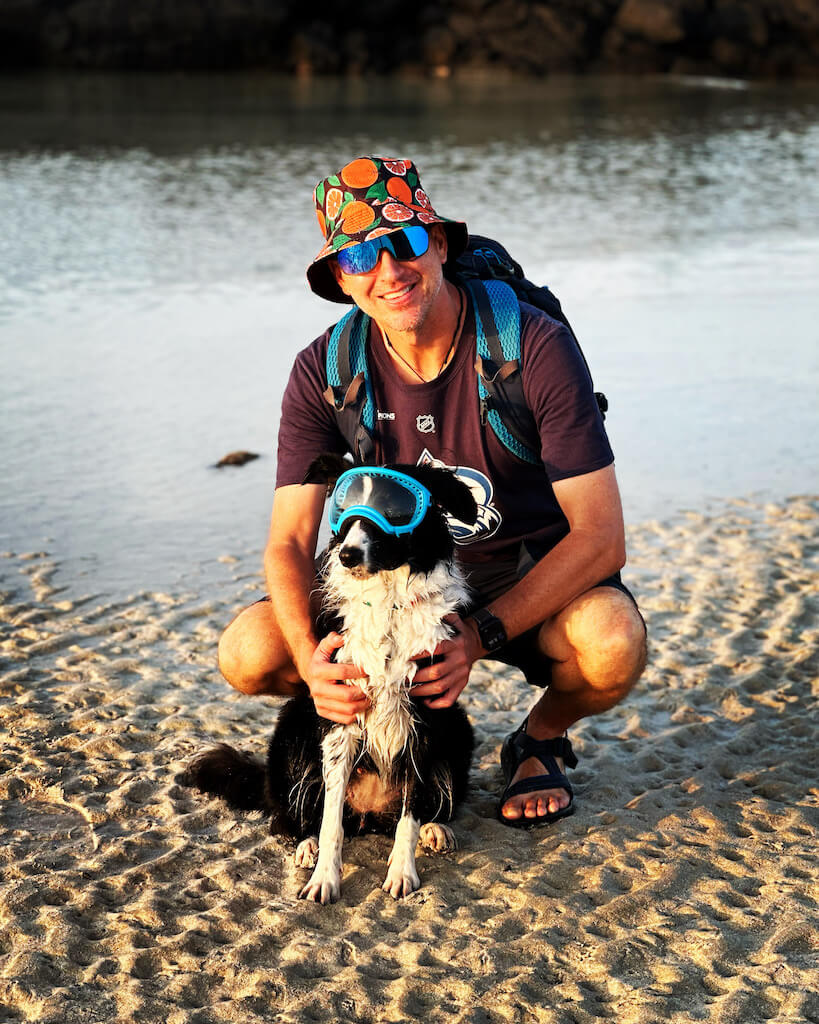This Jeju Island ferry travel guide covers everything you need to know — from ferry tickets and port options to bringing pets or vehicles onboard.
Quick heads up: This post may contain affiliate links to gear, hotels, flights, or experiences I’ve used — or genuinely recommend. If you book through one, I may earn a commission at no extra cost to you. Full disclosure here.
⛴️ Why Take the Ferry to Jeju Island?
So, you’ve decided to visit Jeju Island, South Korea—great choice! But now you’re left with a big question:
How do I get there?
Unless you’re an Olympic-level swimmer, you have two options: you can fly or take a ferry.
Flying into Jeju International Airport (CJU) is the fastest and easiest way to get there. Cheap daily flights run from most major Korean cities, as well as select international destinations.
✈️ Want to compare flights? Search for flights to Jeju Island
🚢 Already in Korea and want a more flexible option? Taking the Jeju Island ferry might be the better choice. And no, I don’t work for the ferry union, but after planning our own trip last summer, I found several key reasons why taking the ferry made more sense than flying.
If you’re looking for a Jeju Island ferry travel guide that includes both car and pet policies, you’re in the right place.
Before I get into what to expect with ferry travel, you may first want to read about what to do when you get there.
🧳 Jeju Island Itinerary
I detailed our full 5-day, dog-friendly Jeju Island adventure — complete with beaches, cafes, and ferry logistics. No dog? No problem. Everything we did can be enjoyed with or without a four-legged co-pilot.
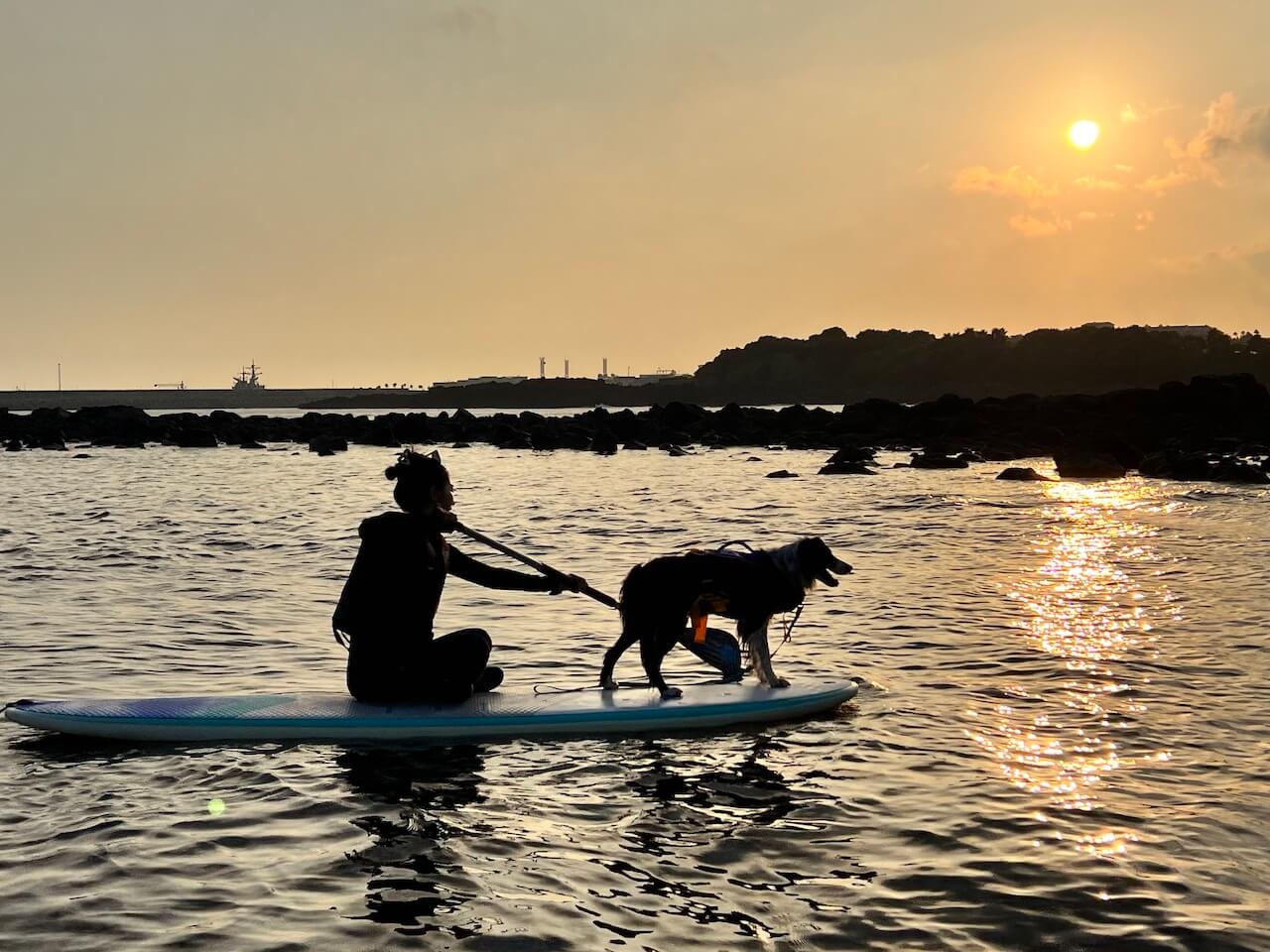
Update: We returned to Jeju about a year later (this time by plane — short on time, sadly), and I finally tackled the hike up Hallasan, Korea’s tallest peak.

👉 Read the Full Hallasan Hiking Guide
Why Take the Ferry?
🚗 Bring Your Car – No need to rent a vehicle on Jeju (saving time & money).
🐶 Pet-Friendly – Easier and less stressful than flying with a dog.
💰 Budget-Friendly – Ferry tickets can be cheaper than flights, especially with luggage.
⛴ More Relaxing – Avoid airport hassles and enjoy the adventure of sea travel.
Most ferry passengers don’t bring a car or a pet—just their luggage. So, if you’re just looking for an affordable and scenic way to get to Jeju, the ferry is still a fantastic choice.
Why We Chose the Ferry to Jeju Island
For us, taking the ferry was an easy decision because we wanted to bring our own car and our dog, Winnie.
- Driving our own car meant we had total freedom to explore Jeju without relying on rentals.
- Bringing Winnie saved us from spending nearly $500 on dog boarding.
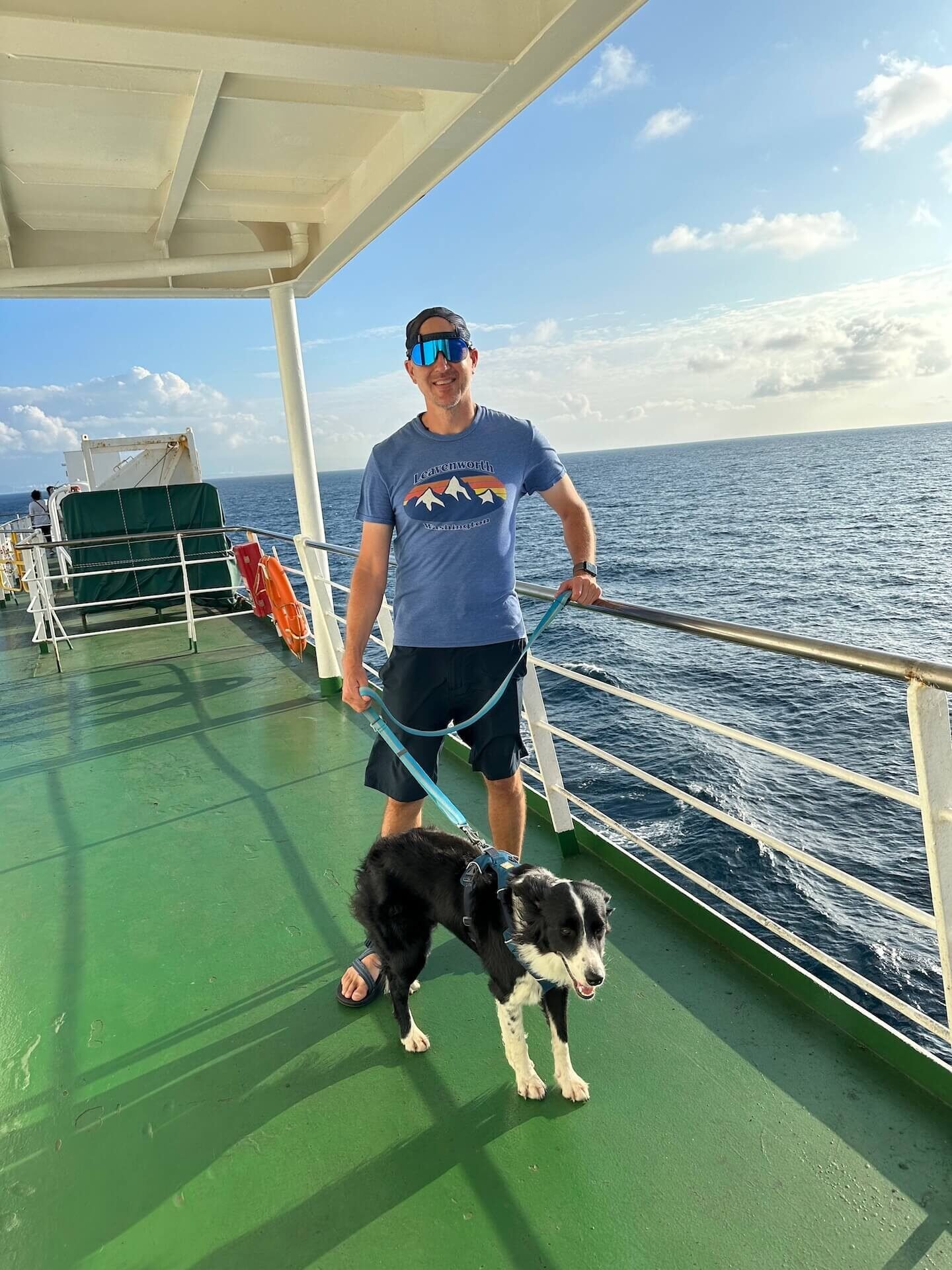
Sure, renting a car on Jeju is an option—we actually did that on a later trip when we flew instead. Some rental agencies even allow pets.
🚗 Need a rental car on Jeju? Compare the best rental car deals here
🔗 Not sure if you can drive in Korea? Check out my guide: Driving in South Korea: A Complete Foreigner’s Guide
But for this particular trip, the ferry made the most sense. No airport stress, no baggage restrictions, and no worrying about Winnie being in cargo—just a scenic ride across the sea.
🎟️ Best Jeju Island Ferry Routes & How to Book Tickets
If you’re taking the ferry to Jeju, the departure port you choose can make a big difference in your experience. While there are multiple ferry routes to Jeju, some are faster, more reliable, and easier to book than others.
Top Jeju Ferry Routes
This Jeju Island ferry travel guide is updated for 2025 and reflects the latest info from major ports.
Not all ferry routes are created equal! Some previously available options, like Incheon to Jeju and Busan to Jeju, are no longer in operation.
Below are the best options based on reliability, ease of booking, and travel time.
🚢 Recommended: Wando to Jeju Ferry
(Best for Most Travelers)
- Operator: Hanil Express
- Sailings: 17 times per week
- Duration: 2 hours 40 minutes
- Why choose Wando?
✔ Fastest ferry option to Jeju
✔ Most popular route, ensuring regular departures
✔ Easiest way to book in English using Klook
👉 Book Your Jeju Ferry Tickets via Klook
Other Routes to Consider:
Nokdong (Goheung) to Jeju
(Suitable Alternative to Wando)
- Operator: Namhae Gosok Ferry
- Sailings: 6 times per week
- Duration: 3 hours 30 minutes
Yeosu to Jeju
(Longer journey)
- Operator: Hanil Express
- Sailings: 6 times per week
- Duration: 6 hours 40 minutes
How to Book Jeju Island Ferry Tickets
While some ferry routes allow for same-day ticket purchases at the port, I highly recommend booking in advance, especially during peak travel seasons.
🛒 The Best Way to Book in English: Klook
For foreign travelers, the simplest and most convenient way to book Jeju ferry tickets is through Klook. The platform offers:
✔ English-language booking (no need to struggle with Korean websites)
✔ Instant confirmation
✔ Easy mobile ticket access
👉 Reserve Your Jeju Ferry Tickets on Klook
Booking Directly with Hanil Express
(For Those Who Read Korean)
If you need to bring a vehicle or pet, you may need to book directly via Hanil Express (Korean site). However, completing payments as a foreigner can sometimes be tricky, so Klook is the easiest option for foot passengers.
Final Thoughts: Which Ferry Route Should You Choose?
For the fastest and most convenient option, Wando Port is your best bet. Booking through Klook makes the process simple and English-friendly.
If Wando is fully booked, Nokdong (Goheung) and Yeosu are alternatives, though they take longer.
Since all ferry ports, including Wando, are located along South Korea’s southern coast, planning your journey is crucial. Ferry departures often happen late at night or early in the morning, so be sure to factor in travel time and any potential waiting.
For example, when we drove from Daegu to Wando Port with our car and dog, the trip took about four hours, and our ferry didn’t depart until after midnight. The ferry ride itself was only three hours, but we arrived in Jeju at the crack of dawn, running on early-trip excitement rather than sleep.
Whether you’re driving or taking the KTX, give yourself plenty of time to reach the port well before departure.
Helpful Tip: Check your arrival time and plan accordingly. We reached Jeju around 6 a.m.—much too early for hotel check-in. Thankfully, having a car let us explore for the morning, but after a long travel day, waiting so many hours for check-in wasn’t ideal.
If you arrive early, have a plan for the day, as most accommodations won’t allow check-in until around 4 p.m.

⚓️ Boarding Procedures
My first tip? Arrive early. But don’t go overboard (bad pun, I know). You won’t want to be late either.
The ferry port operates much like an airport, with a waiting area before departure. I’ve only used Wando Port, but I assume other ports follow a similar process.
Even if you bought your ticket online, you still need to check in at the counter. In our case, the ticketing agent gave us paper wristbands indicating our ticket class.
Once boarding is announced (even if you don’t speak Korean, you’ll notice the commotion), passengers line up to show their tickets.
If you’re bringing a car or pet, the boarding process is slightly different—I’ll cover those details in later sections.
🚢 Quick Tips for Boarding:
✔ Have your ticket and ID (passport or Korean ARC) ready.
✔ Follow the crowd—staff will help direct you.
✔ If unsure, just ask—even with limited Korean, pointing at your wristband usually works!
Once you board, settle in and explore.
Onboard: What to Expect
Every ferry is different, but I can share what we experienced on our journey from Wando to Jeju.
🐾 Pet Room Experience
Since we brought Winnie, we booked a pet-friendly room—basically, an open-floor space shared with other passengers and their dogs.
- On the way to Jeju, we lucked out and had the room to ourselves.
- On the return trip, the room had several other passengers and their dogs, but it was still spacious and comfortable.
🛏 Tip: If you book a pet room, bring a mat, pillow, and blanket—you’ll be sleeping on the floor!


Seating and Sleeping Options
General Seating
If you don’t book a private cabin, the ferry has open seating, much like an airplane. The seats are comfortable but basic.
Sleeping Rooms
Aside from the pet room, there are shared sleeping areas where passengers can spread out and sleep on the floor.
- Sleeping rooms generally require a ticket (like our pet room), but it seemed like people moved between rooms freely.
- With the exception of the private cabins, nobody really seemed to monitor the open sleeping rooms.
- People without pets, found a place to sleep inside our room as it had the most open space.
- Tip: Bring earplugs, eye mask and a blanket if you plan to sleep.
For our 3-hour Wando-Jeju ferry, we skipped the private cabin. If the trip were overnight or 12+ hours (like the old Busan-Jeju route), we would have considered it.
Private Cabins
You can book a private cabin with a bed. These cost extra, but might be worth it for overnight journeys.
For the 3-hour Wando-Jeju ferry, I don’t really think it’s worth it unless you really value the privacy or want to ensure some comfortable shut eye.
Food & Entertainment Onboard
If you’re a picky eater, you might want to bring your own snacks. If you’ve been in Korea for awhile, you probably know the routine.
However, our ferry had a fully stocked convenience store—think 7-Eleven on the sea.
🍜 Available for purchase:
- Instant ramen 🍜
- Chips & snacks 🍫
- Drinks, beer, soju 🍺
- Ice cream 🍦
I believe most ferries also have restaurants, bars, and even karaoke rooms, but I didn’t personally check them out.
For entertainment, most ferries have:
🎮 Game rooms (for kids & big kids alike)
🎤 Noraebang (karaoke rooms)
Outdoor Deck and Seating
If the weather is nice, get out on deck and enjoy the sea breeze! 🌊
The ferry’s outdoor seating area is a great spot to take in the ocean views. But hold onto your hat—it gets windy!
🐶 Bonus: Some ferries (like the Silver Cloud) have an outdoor dog play area!

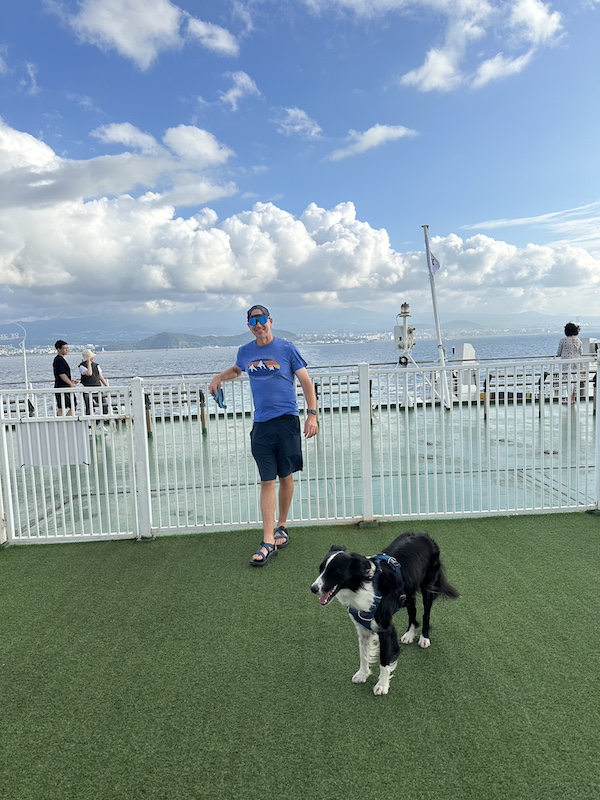
🐾 Bringing a Pet: What You Need to Know
Can you bring a pet on the ferry?
Yes! You can bring a pet on the ferry. But there are some rules.
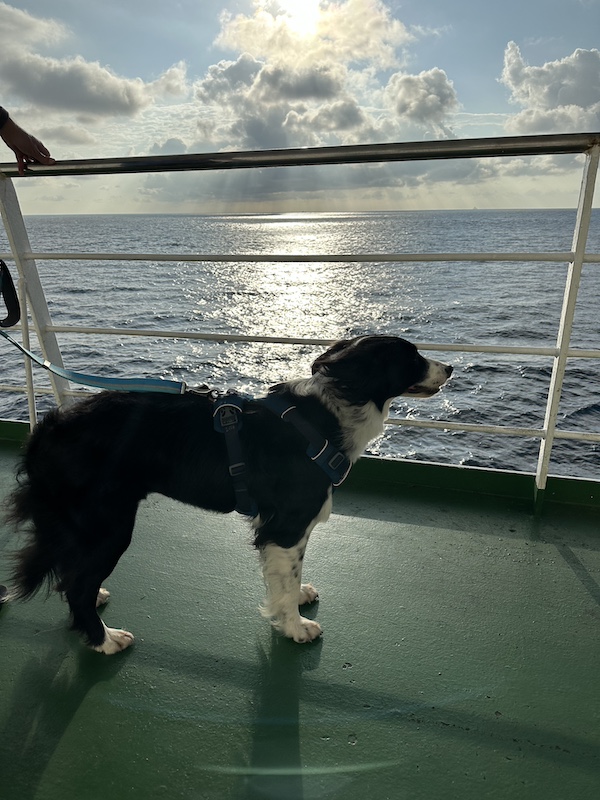
Click on the dog icon for details and information. Unfortunately, it is all in Korean (with some helpful pictures), but I’ll do my best to summarize the basics in English below.
Pet Travel Requirements
We brought a large dog kennel for Winnie (yes, I had to carry it up and down the stairs).
🚨 Important: The pet carrier rule is strictly enforced. You cannot board without one!
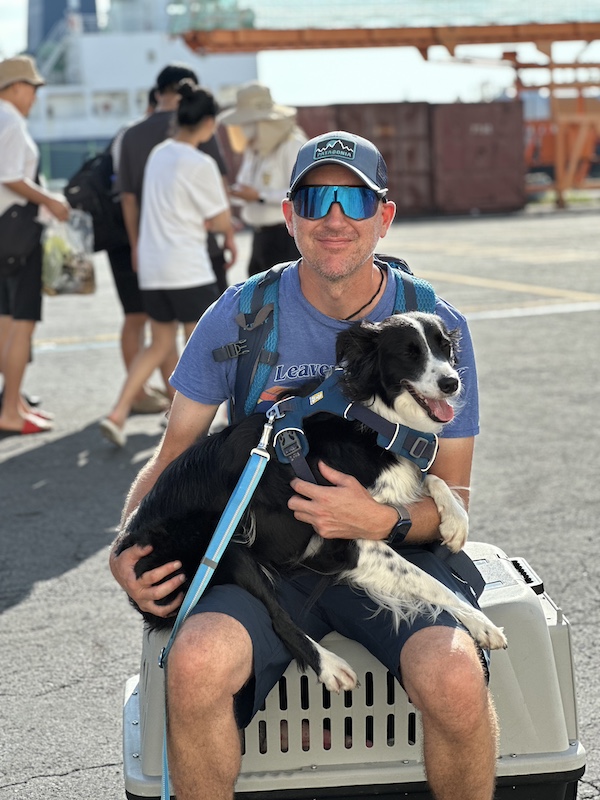
Regarding the muzzle, I believe this only applies to big and medium size dogs. How do they decide this, I’m not sure, but I didn’t notice any of the small dogs wearing them.
I know your dog might hate wearing it. However, the good news is that you can generally just hold it in your hand and put it on the dog if someone looks at you sideways.
It is required to be on the dog, however, during the boarding process.
Once on board, we found that holding it in our hands generally put people at ease when walking around.
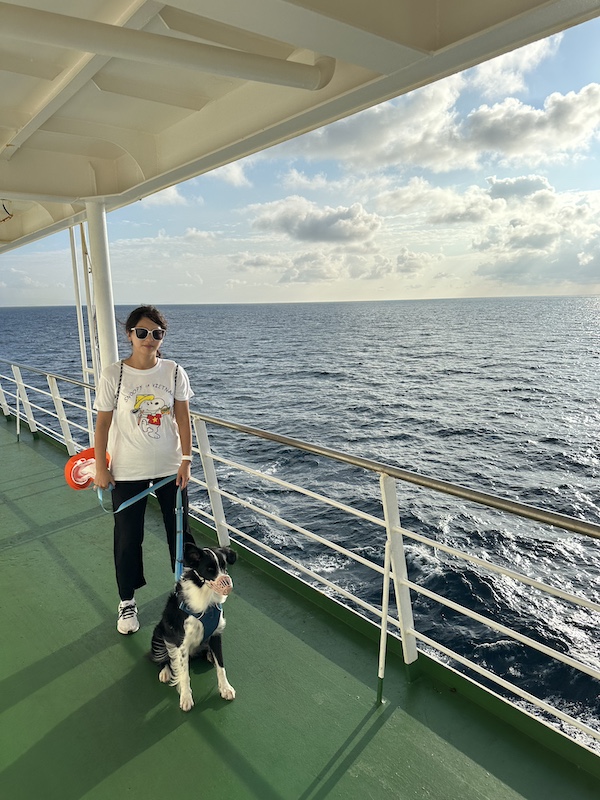
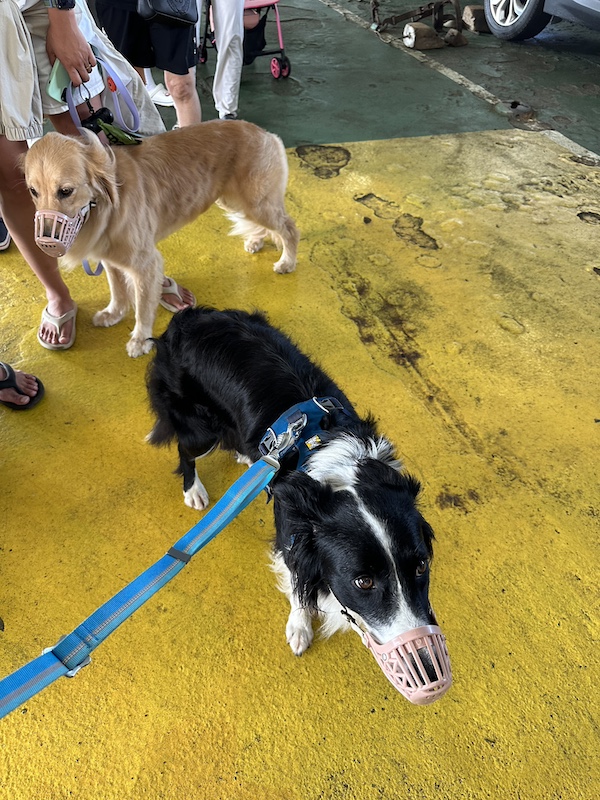
Outdoor Deck Dog Zone & Play Area
I can’t speak for every Jeju Island Ferry, but our ferry, the Silver Cloud, to and from Wando Port, had it’s own outdoor dog play area.
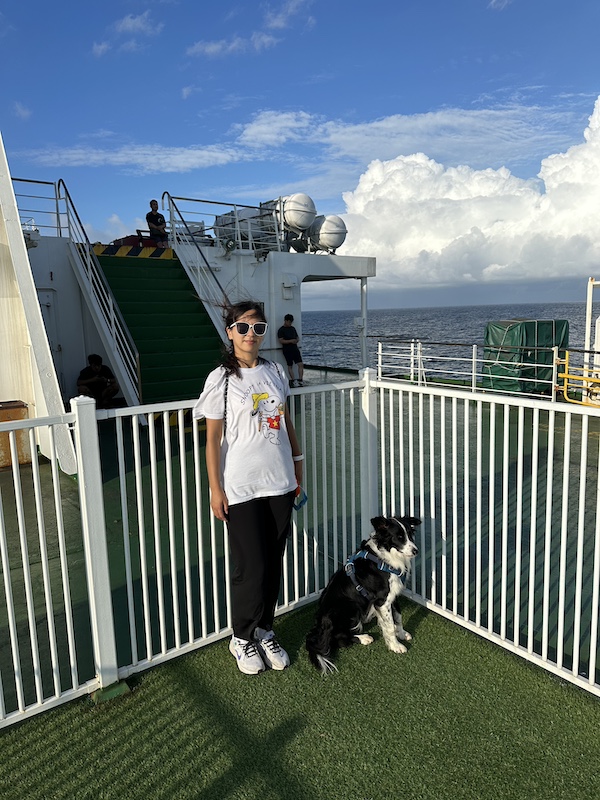

🚗 Bringing Your Own Car: What to Know
For us, bringing our car to Jeju was a huge advantage—it saved money on a rental, made traveling with our dog easier, and just felt more convenient overall. Of course, this only applies if you already live in Korea and own a car.
🚗 Check Jeju Island rental car options here 🚗
That said, renting a car on Jeju Island is a fantastic option and something we did on a subsequent trip. It gives you the freedom to explore the island at your own pace, and prices are generally reasonable.
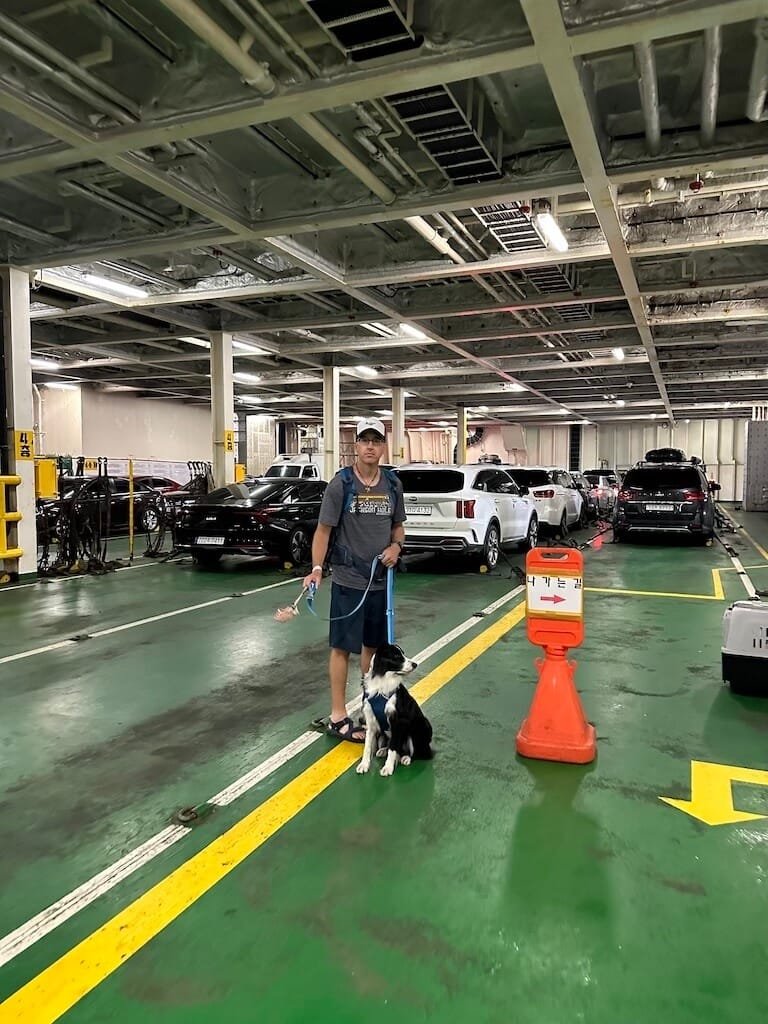
Why bring your own car?
For residents of Korea who have their own car:
🚗 Saves money on car rental fees.
🚗 Easier to travel with pets & luggage
🚗 Getting to and from the port is much more convenient!
🚗 Don’t have to hassle with public transportation schedules.
How to Board with a Car
1️⃣ Arrive at least 1.5 hours before departure.
2️⃣ Check in and get your vehicle pass.
3️⃣ Passengers must board separately—only the driver can take the car onto the ferry.
4️⃣ Follow crew instructions to park your vehicle.
5️⃣ Once parked, you must exit the vehicle (you can’t return to it until arrival).
🚨 Tip: Take a picture and pay close attention to where you parked, or at least be smarter than yours truly!
There are more than one parking level and finding your car after a long trip can be confusing! Especially if you’re lugging a big dog crate in your arms.
For rates & bookings, visit Hanil Express (Korean site).
Arrival Procedures
This may seem simplistic, but when the ferry nears dry land, a loud announcement will be made and an organized commotion will ensue.
Even if you don’t speak Korean, it won’t be hard to fall in line and find your way off the ship. There are employees to help you, but if you just play “follow the leader”, you’ll figure it out.
If you brought a car on board, you will need to figure out where you parked. I had an issue with remembering where I had parked on one leg of our journey, which was exacerbating in my tired state. None-the-less, I found it and driving it off the ship was easy.
Reminder: Jeju ferries sometimes arrive at odd hours. If you land at 5 AM, plan something to do before hotel check-in.
Plan Your Stay on Jeju Island
📶 Stay Connected with an eSIM
🇰🇷 Get a South Korea eSIM with Airalo
If you’re considering an eSIM for your Jeju Island journey, I’ve written a detailed guide on how to purchase and set up an Airalo eSIM based on my own experience.
I live in Korea so I don’t need an eSIM here, but I’ve used Airalo eSIMs in both Vietnam and Japan with great satisfaction!
🏨 Where to Stay on Jeju Island
Jeju Island has a wide variety of places to stay—from budget hostels and family-run pensions to modern eco-retreats and luxury seaside resorts. Whether you’re planning a quick weekend escape or a longer island road trip, there’s something here for every style and budget.
For accommodations in Asia, I usually start with Agoda since it tends to offer great regional coverage, and then compare prices and cancellation policies on Booking.com. Both platforms often list the same properties, but their deals and perks can vary—so it’s worth checking both.
If you’re traveling with a dog or just want a stay that feels more like home, VRBO’s Jeju Island listings are also worth a look. During our trip, we booked a dog-friendly VRBO with a large yard—ideal for our border collie—and found it a great alternative to hotels or pensions. There are plenty of unique stays on the island, whether or not you’re bringing a pet.

📌 Heads up: Most hotels and pensions in Korea don’t allow check-in until 4:00 PM. If you arrive early—especially by ferry—plan a few stops or sightseeing before heading to your stay.
If you found this guide helpful, you can support my blog by booking your stay through the links above. It’s at no extra cost to you, and it helps keep this content ad-free and DIY traveler-friendly.
🏝️ Things to Do on Jeju Island
Looking for easy ways to book activities on Jeju without piecing everything together yourself? I’ve pulled together some of the most useful platforms below — including GetYourGuide, Klook, and Viator — so you can compare prices, check real-time reviews, and lock in tours while you plan.
From lava tubes to tea fields to waterfall hikes, Jeju has a ridiculous amount of options. If you want a full breakdown of how I structured my trip, check out my Jeju itinerary here, but otherwise, browse below to start building your own adventure.
🛟 Should You Get Travel Insurance for Jeju?
While Jeju is one of Korea’s safest destinations, it’s also a place for big adventures — from ferry crossings to volcano hikes, scuba diving, biking, and more. And with Korea’s national health system generally not covering visitors, it’s smart to be prepared.
Before my next overseas trip, I’ll be traveling with a SafetyWing policy — it’s affordable, flexible, and includes coverage for things like travel delays, lost baggage, and medical emergencies.
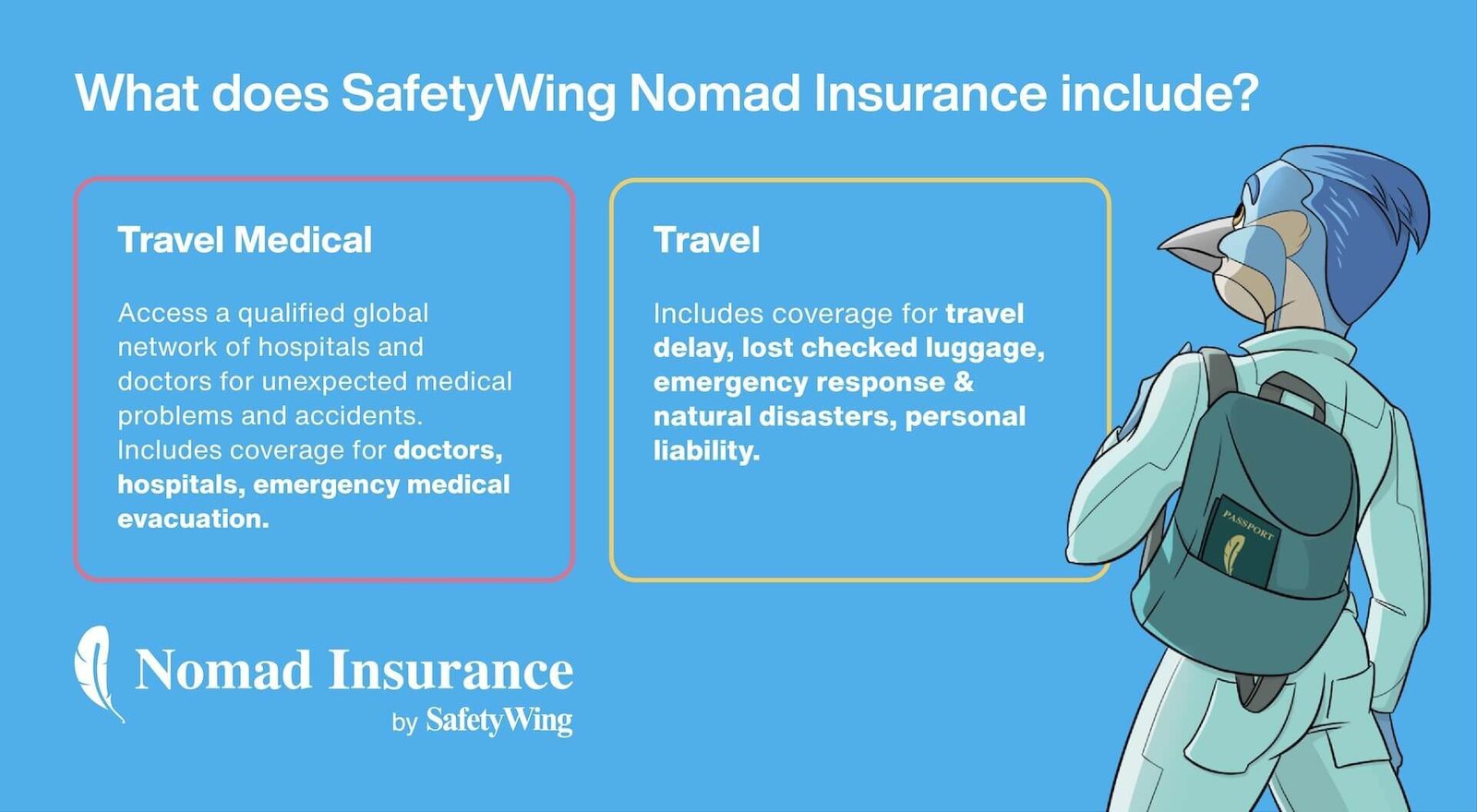
👉 Click here to get a quote or read the details
Final Thoughts
If you live in South Korea, or are just visiting, Jeju Island should definitely be on your bucket list. I can’t believe it took me over 15 years of living in Korea to make there. Now that I have, we definitely plan to go back in the very near future.
For all of the reasons previously mentioned, I am sure that I would choose ferry travel again.
I’ll admit, there are a few extra steps involved that may not be for everybody. However, if you can navigate the booking process (pun intended) and work out transportation to the nearest port, then traveling to Jeju Island by ferry is an unforgettable experience!
❓Jeju Island Ferry Travel FAQs
What are the best ferry routes to Jeju Island in 2025?
The top ferry routes to Jeju Island are Wando to Jeju (fastest and most frequent), Nokdong (Goheung) to Jeju, and Yeosu to Jeju. Routes like Incheon to Jeju and Busan to Jeju are no longer in operation.
What is the fastest ferry route to Jeju Island?
The fastest route is from Wando to Jeju, operated by Hanil Express. The trip takes about 2 hours and 40 minutes and runs up to 17 times per week.
Can foreign travelers book Jeju ferry tickets in English?
Yes! Klook is the best option for English-speaking travelers. It offers easy online booking, instant confirmation, and mobile ticket access — no need to navigate Korean-language ferry sites.
Is it necessary to book ferry tickets in advance?
While same-day port purchases are possible on some routes, it’s highly recommended to book in advance — especially during peak seasons — to secure your spot and avoid language or payment issues.
Which ferry routes allow you to bring a vehicle or pet?
If you’re traveling with a car or pet, booking directly through Korean operators like Hanil Express may be necessary. Klook is ideal for foot passengers but doesn’t support vehicle or pet bookings.
How long do the different ferry routes to Jeju take?
Wando to Jeju takes 2h 40m, Nokdong to Jeju takes 3h 30m, and Yeosu to Jeju takes about 6h 40m. Travel time varies by departure port and ferry operator.
What documents do I need to board the ferry?
You’ll need a valid photo ID — such as a passport or ARC (Alien Registration Card) — to board the ferry. Make sure the name on your ticket matches your ID.
Are ferry services ever canceled due to weather?
Yes, sailings may be delayed or canceled in bad weather. If you book through Klook, you’ll receive updates and can typically get a refund or reschedule with minimal hassle.
Alternate Option: Flying to Jeju Island with a Dog
Update: A year after writing this, we returned to Jeju Island, but this time we were under tighter time constraints. We still wanted to bring Winnie, so we flew with her from Daegu.
The flight was much faster, and although Winnie handled it like a champ, I couldn’t help but worry about her comfort and mental state the entire time.
I may write a more detailed post about flying with a dog in the future. For now, though, if you have the time, I still recommend taking the ferry.
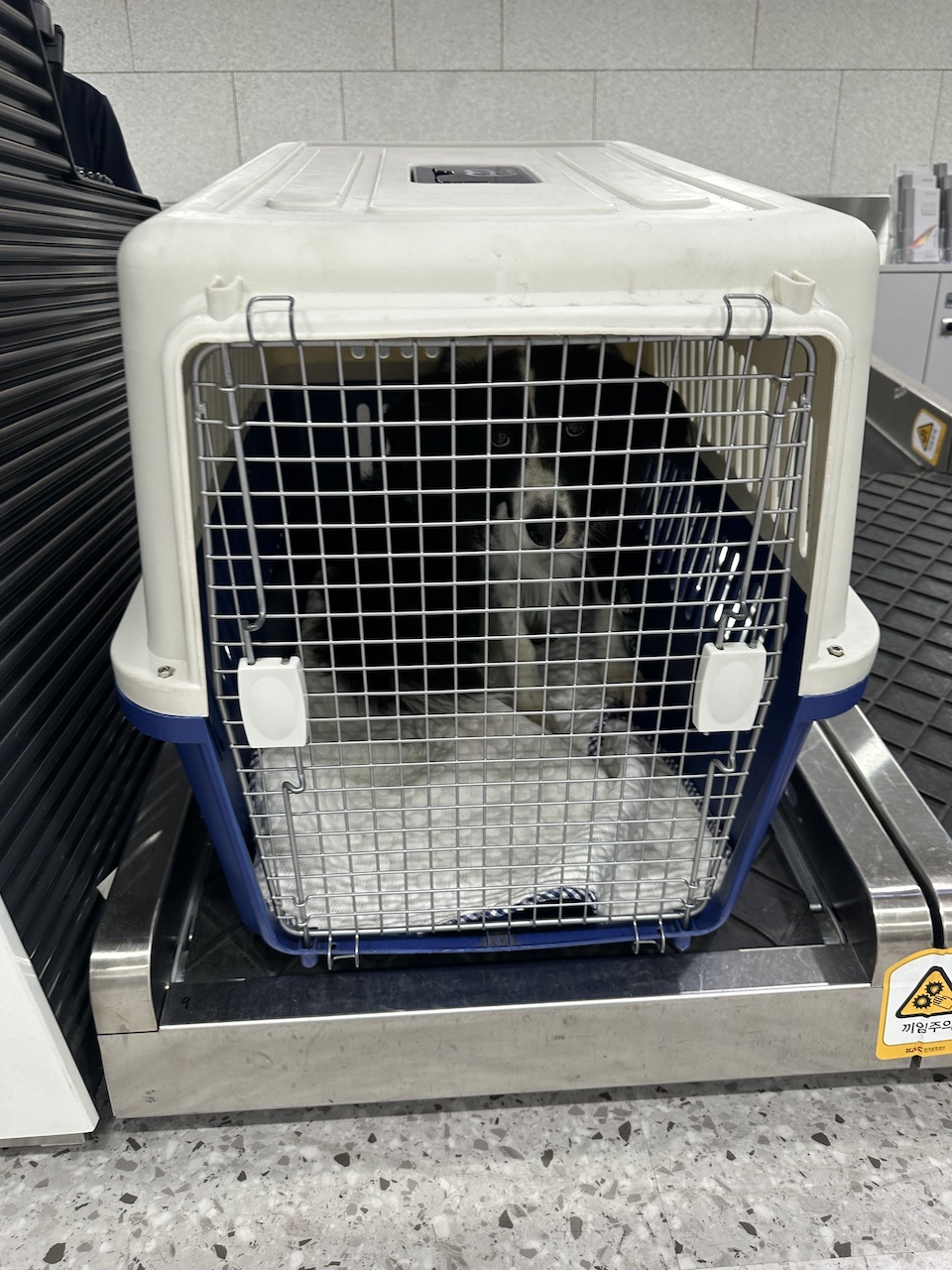

Custom Jeju Shirts
I discovered that finding cool souvenir t-shirts wasn’t as easy as I thought it would be, so I made some of my own. If you’d like your own Jeju Island shirt before or after your trip, please visit the Colorado Saram Store.

If you have questions, please join my free Facebook group and community. I’m happy to answer you there!




